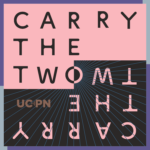Mike Menzel on NASA’s JWST Launch
Putting a telescope into orbit 1.5 million kilometers away takes quite a bit of math
Show Notes
Imagine trying to unfold 5 layered, thin metallic sheets, each the size of a tennis court without tearing or snagging the material. Now imagine doing it in the vacuum of space, at a distance much farther than the moon, and that a multimillion dollar project relies on your success. That provides a bit of perspective for the massive undertaking that was the James Webb Space Telescope (or JWST).
In this episode of Carry the Two, we hear from NASA lead systems engineer, Mike Menzel, all about designing and testing the solar shield for JWST.
Find our transcript here: LINK
Curious to learn more? Check out these additional links:
JWST’s orbit: https://jwst.nasa.gov/content/about/orbit.html
General physics of the JWST: https://www.wired.com/story/the-physics-of-the-james-webb-space-telescope/
Video of JWST unfolding (referenced in the episode): https://www.youtube.com/watch?v=Pg-YI0T-4Mk
Coordinating the 18 mirrors: https://www.nasa.gov/vision/universe/starsgalaxies/wavefront.html
What is a Lagrange point: https://solarsystem.nasa.gov/resources/754/what-is-a-lagrange-point/
Why hexagons are a great shape (for telescope mirrors & other uses): https://www.youtube.com/watch?v=thOifuHs6eY
Controversy surrounding the name of JWST: https://www.nytimes.com/2022/12/19/us/james-webb-telescope-gay-rights.html
JWST’s images of Neptune: https://www.nasa.gov/feature/goddard/2022/new-webb-image-captures-clearest-view-of-neptune-s-rings-in-decades
Follow more of IMSI’s work: www.IMSI.institute, (twitter) @IMSI_institute, (mastodon) https://sciencemastodon.com/@IMSI, (instagram) IMSI.institute
Follow Mike Menzel: https://webb.nasa.gov/content/meetTheTeam/people/menzel.html
This episode was audio engineered by Tyler Damme.
Music by Blue Dot Sessions & original score for Star Trek by Alexander Courage.
Sound effect by beetpro at pixabay.
The Institute for Mathematical and Statistical Innovation (IMSI) is funded by NSF grant DMS-1929348.